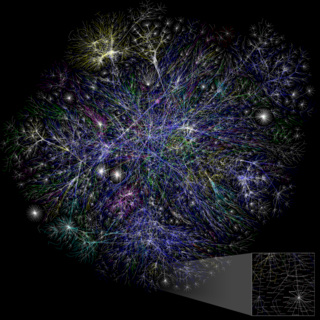Polyamory
Impacts of Internet Communication on Polyamorous Communities
The third wave of consensual nonmonogamies in the US gained steam in the 1990s.
Posted May 5, 2022 Reviewed by Michelle Quirk
Key points
- Many polyamorous people were early adopters of technology.
- Livejournal was the first Website to offer easy access to large online polyamorous community interaction.
- Internet communications allowed sex and gender minorities to find each other online, and their communities have grown larger and diversified.
This is the third blog post in a series about the history of consensual nonmonogamies (CNMs) in the United States. The first post explained how the first wave of CNM was influenced by anarchy, first-wave feminism, and transcendentalism. The second post explored the second wave of CNM in the United States, shaped by the countercultures of the 1960s and '70s. This third and final post of the series looks at the impact of Internet communications on the third wave of CNM.

Internet communications, and especially social media, have changed the way people establish, sustain, and break up from relationships. While this has transformed dating and relationships for allosexuals (people who experience sexual desire, those who are not asexual) with Internet access, it has revolutionized the lives of sex and gender minorities (SGMs). Sexual nonconformists who had previously feared public exposure for good reason were suddenly able to find each other with relative ease, in private, and across geographic distances. Lesbians, gay men, bisexuals, kinky folks, swingers, polyamorists, and practitioners of consensual nonmonogamy had already established community connections, and those all expanded dramatically.
Early Internet Communities
Many of the Baby Boomers and Gen Xers who participated in my Longitudinal Polyamorous Family Study reported that they were early adopters of Internet communications, finding each other in the early chat rooms and talking about expanded relationship options. At the end of the 1990s, the Web site Livejournal created a public forum for people to write their thoughts and share them with a select group. Polyamorists took to Livejournal with a vengeance and began crafting online communities that proliferated and subdivided into the 2000s.
Organizations that serve polyamorous folks were also early adopters of the Internet and created Web sites replete with information, connections, and answers to frequently asked questions. Some polyamorous folks also really enjoyed SecondLife, a platform that allows people to create a wide range of avatars, buildings, and relationships in a virtual environment. SecondLife, however, never gained the level of popularity that Livejournal held among polyamorists.
Later Internet Communities
Like almost everyone else in the United States, polyamorous people embraced social media. Some of the most popular discussion fora for polyamorous folks began (and to some extent remain) on Facebook, and then proliferated onto Reddit, Instagram, and Tik Tok. Online dating sites like OKCupid embraced the potential for multiple-partner relationships and allowed users to list a range of relationship types they sought.
Since then, some dating apps for nonmonogamous people have created platforms specifically for multiple-partner relationships. Meetup is one of the most important sites for people who are new to the concept of CNM and want to check it out because it offers local meetings that are easy to find in most large metropolitan areas in the United States. The relative ease of finding a possible CNM meetup and the low investment of time and money make Meetup a popular entree into interacting with other nonmonogamists in person.
Overlapping With Other Sex and Gender Minorities

The impact the Internet, and especially social media, has had on the polyamorous community would be difficult to overstate. From finding new dates to chatting about jealousy and asking for advice, much polyamorous relating occurs online.
The Internet has also significantly impacted how SGMs interact with each other. Polyamorists intersect significantly with bisexuals and people interested in kinky sex or bondage/discipline, dominance/submission, and sadism/masochism (BDSM). Where most second-wave polyamorists tended to have a more singular identity focused on “swapping” within heterosexual relationships, third-wave polyamorists tend toward bisexual or pansexual relationships that involve not only nonmonogamy but sometimes BDSM as well. My research indicates that if someone is both polyamorous and kinky, then their dominant identity is likely to be that of a kinkster, whereas someone who is polyamorous but not kinky will tend to have polyamory as their dominant sexual identity.
References
Livejournal: www.livejournal.com/
SecondLife: secondlife.com/


